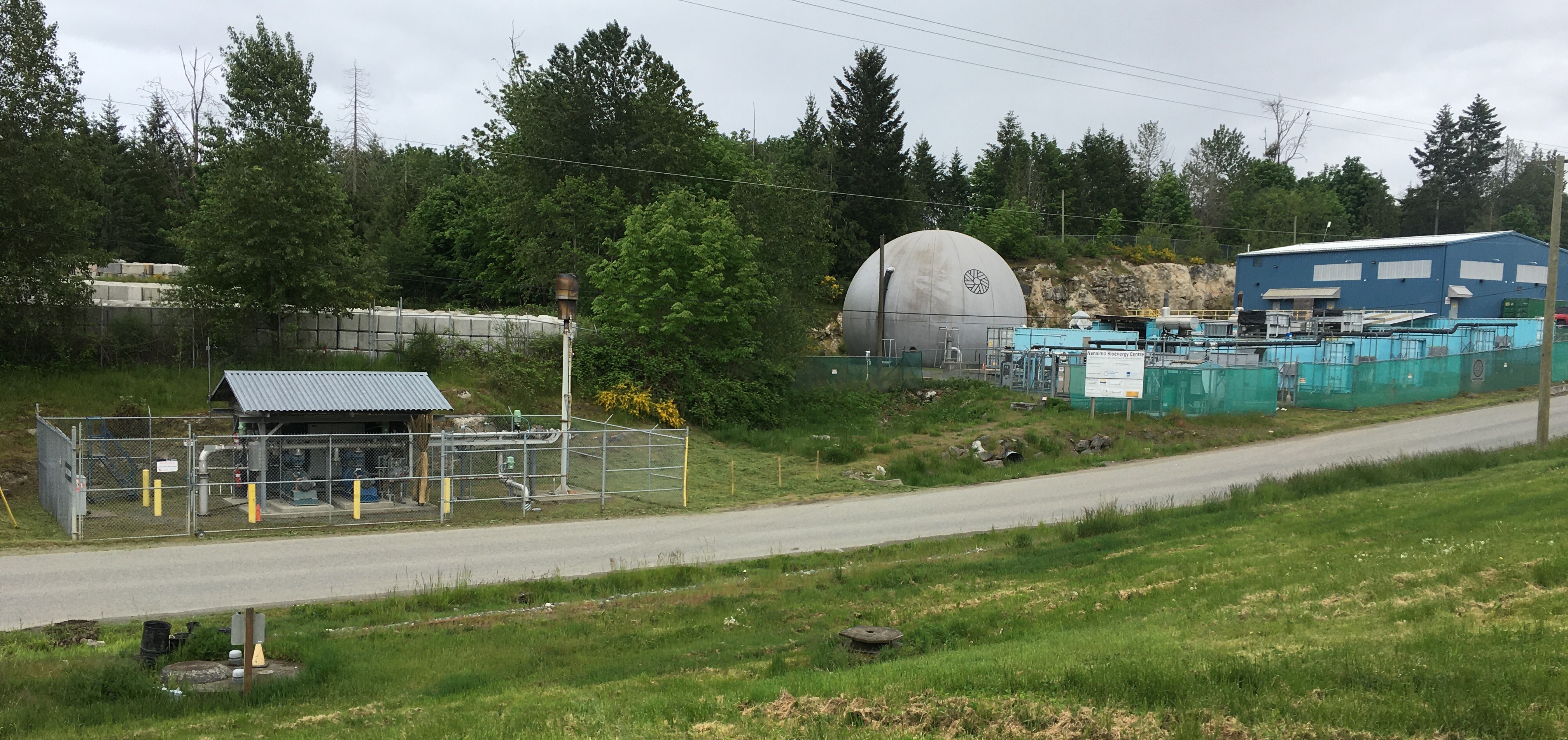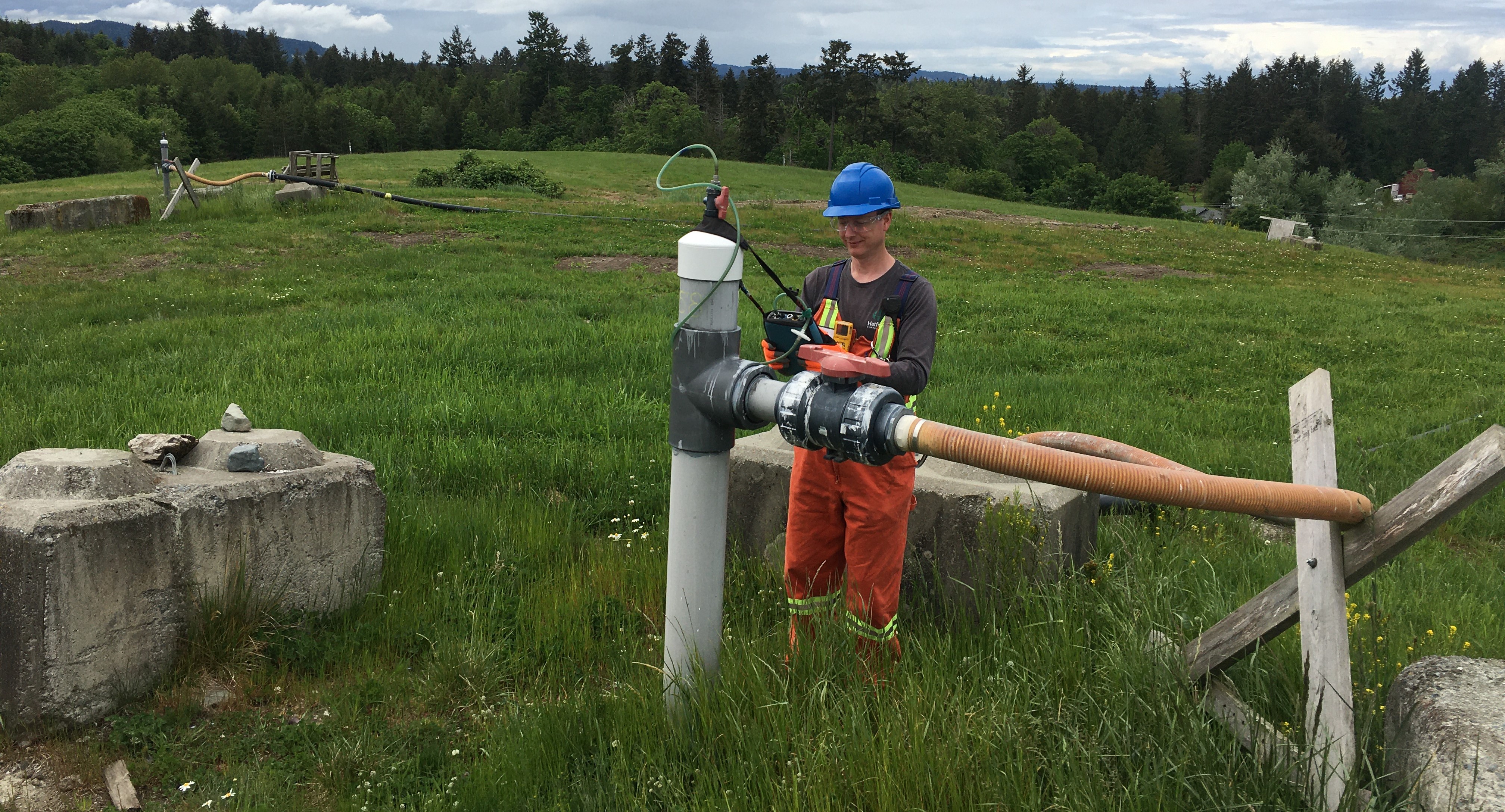Solid Waste Greenhouse Gas Management
RDN Landfill Gas Production and Capture
Landfill gas (LFG) is generated as a bi-product of anaerobic decomposition of waste within a landfill. LFG is composed of equal parts methane and carbon dioxide. As a greenhouse gas, the global warming potential of methane is 25 times that of carbon dioxide.
The RDN has implemented several programs to reduce LFG emissions from the Regional Landfill. A commercial food waste ban was implemented in 2005, followed by wood waste; and yard and garden waste bans in 2007 were implemented at both Solid Waste Facilities in the RDN. The organics bans reduced the amount of organic waste entering the Regional Landfill. Reducing the amount of organic waste within the landfill reduces LFG production. LFG collection and utilization systems work together to extract and destroy LFG. Burning LFG destroys the methane by converting it to carbon dioxide and water. Converting methane to carbon dioxide reduces the global warming potential of LFG. In 2019, the annual greenhouse gas (GHG) emissions from the Regional Landfill were reduced by 27,000 tonnes of carbon dioxide equivalents.
Landfill Gas Collection and Utilization
The landfill gas collection system consists of the LFG Control Plant and flare system, 54 LFG wells, and 7 LFG extraction trenches. The collection system extracts LFG from within the Regional Landfill. The recovered LFG is sent to Cedar Road Bioenergy Inc. (CRB). The CRB facility burns LFG as feedstock for two internal combustion engine/generator systems. This facility can produce 1,600 KW of electricity. Power produced at the facility is sold to BC Hydro. When CRB the facility is not operating, methane is destroyed by burning LFG at the flare system.

Landfill Gas Monitoring
The monitoring program collects data to verify compliance with the Landfill Gas Regulation. The data is also used to optimize the performance of the LFG collection system and balance gas quality around the site. GHG reductions are calculated from monitoring records from the LFG control plant.

Greenhouse Gas Reporting
The RDN tracks fuel usages of heavy equipment and building heating systems at the Landfill. Greenhouse gas emissions are calculated from LFG recovery data and annual fuel usages. Total GHG emissions from the site are reported to Environment and Climate Change Canada (ECCC) GHG Reporting Program each year.